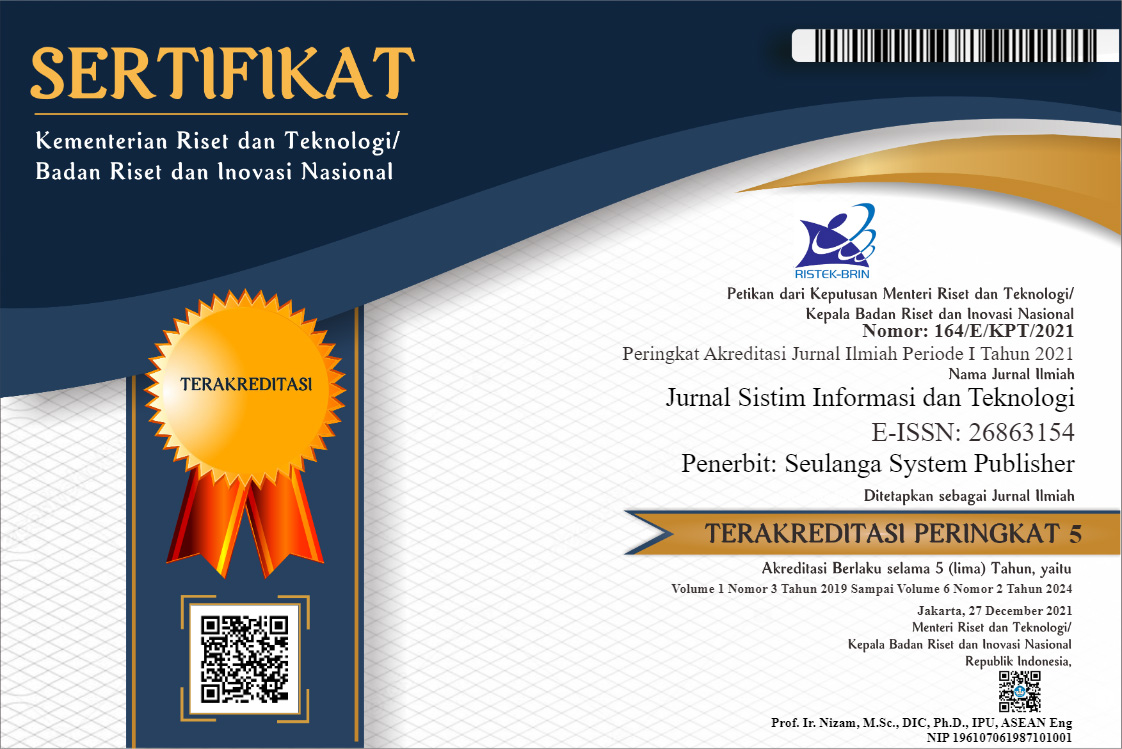Panel Data Analysis in Identifying and Mapping Caused Factors of Financial Crises and Monetary Instability in Developing Countries
DOI:
https://doi.org/10.60083/jsisfotek.v6i2.347Keywords:
Macroeconomic, Fundamental, Financial, InflationAbstract
This study aims to reveal the extent of macroeconomic instability, which has the characteristics of a financial crisis and inflation. To test the hypothesis, researchers use fixed effects and random effects estimators to assess the presence of individual and temporal effects. Macroeconomic fundamentals, especially the risk of devaluation and a drop in economic activity can be seen as early warning signs of banks becoming less solvent. They also play a big role in explaining how deposits changed during the crisis. Our findings highlight the unique features of the convertible monetary regime, reinforcing the belief that debtors will enjoy permanent protection against devaluation risks. This perception encourages the dollarization of bank portfolios, thereby increasing the financial system's solvency risks. There is also evidence that the regulatory framework in this area is weak when it comes to the financial system's exposure to devaluation risks and public debt risks. This is especially true when it comes to an institutional framework that makes it hard for government funding to be changed into other currencies. We find that inflation is a very persistent process during periods of high inflation. However, with the decline in inflation after the implementation of the convertibility regime, its persistence reduced significantly. The results show that non-rational persistence is currently not very high, suggesting that the costs of designing the economy should not be either. We find that univariate models tend to perform better over very short horizons. The results suggest that there may be advantages to using a combination of different models, provided they are informative about the relationship between inflation and its short- and long-run determinants.
References
Chauhan, C., Dhir, A., Akram, M. U. I., & Solo, J. (2021). Food Loss and Waste in Food Supply Chains: A Systematic Literature Review and Fremework Development Approach. Journal of Cleaner Production, 1-14.
Blay, M. W., Musah, A., Ayariga, C., & Okyere, D. O. (2024). Determinants of Financial Literacy and its Effect on Stock Market Participation among University Students in Ghana. International Journal of Economics and Financial Issues, 14(2), 15–25. https://doi.org/10.32479/ijefi.15613
Shenjere, P., & Ferreira-Schenk, S. (2024). Analysing the Life Satisfaction of Risk-averse and Risk-loving Investors in South Africa. International Journal of Economics and Financial Issues, 14(2), 89–96. https://doi.org/10.32479/ijefi.15440
Limei, H., Tannady, H., & Nurprihatin, F. (2018). Meminimumkan Biaya Transportasi pada Capacitated Vehicle Routing Problem dengan Metode Heuristik. SEMRESTEK 2018, 605-613.
Pujawan, I. N., & Mahendrawati. (2017). Supply Chain Management Edition 3. Yogyakarta: ANDI.
Diane, L., & Brijlal, P. (2024). Forecasting Stock Market Realized Volatility using Random Forest and Artificial Neural Network in South Africa. International Journal of Economics and Financial Issues, 14(2), 5–14. https://doi.org/10.32479/ijefi.15431
Séraphin, P. Y., & Cyrille, K. K. (2024). Tourism, Financial Development and Sectoral Development in ECOWAS Countries: Empirical Evidence from the CS-ARDL Approach. International Journal of Economics and Financial Issues, 14(2), 54–64. https://doi.org/10.32479/ijefi.15658
Sharma, M. K., Bhagwat, R., & Sharan, G. (2005). Practice of Performance Measuremnet: Experience from Indian SMEs. Internation Journal of Globalization and Small Business, (2), 183-213.
Habanabakize, T., & Dickason-Koekemoer, Z. (2024). A Comparative Analysis between Intrinsic and Extrinsic Drivers of Inflation. International Journal of Economics and Financial Issues, 14(2), 36–44. https://doi.org/10.32479/ijefi.15685
Tannady, H. (2019). Process improvement to reduce waste in the biggest instant noodle manufacturing company in South East Asia. Journal of applied engineering science, 17(2).
Downloads
Published
How to Cite
Issue
Section
License
Copyright (c) 2024 Jurnal Sistim Informasi dan Teknologi

This work is licensed under a Creative Commons Attribution 4.0 International License.









